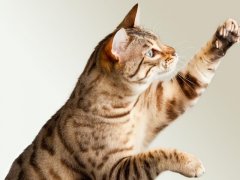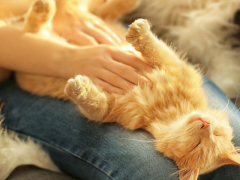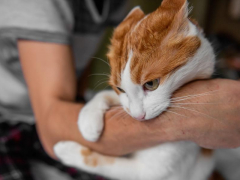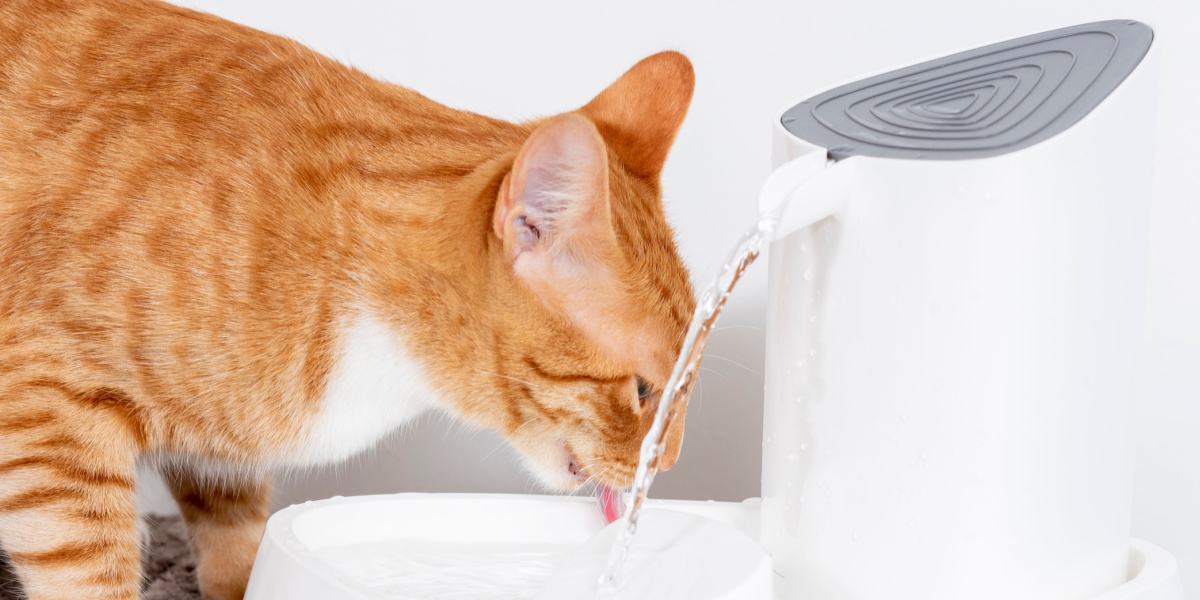
It’s common to worry that your cat isn’t drinking enough water. We know how important it is to keep ourselves hydrated, and it’s no different for our cats. But it can feel like we never see them drinking.
The good news is that cats don’t actually need to drink quite as much water as other animals, per pound of body weight. This is because their kidneys have evolved to be particularly good at concentrating their urine, which helps them conserve water. This may be because cats are originally descended from the African Wildcat, who lived in the desert.
So, the likelihood is that, as long as your cat isn’t showing signs of dehydration or being unwell (which we will discuss in this article), they are probably drinking enough. But how much water do cats actually need to drink, and how long can a cat go without water?
How Much Water Should Cats Drink?
Roughly speaking, a healthy adult cat should drink about 4 ounces of water per 5 pounds of body weight per day. This means that the average 10-pound cat should be drinking about a cup of water every 24 hours.
However, the type of food your cat eats will have a big impact. Wet cat food contains up to 80% water. This means that cats eating wet food need to drink a lot less water to stay hydrated. Cats fed only kibble may need to drink a bit more than average, as their diet contains very little water.
Of course, your cat’s water bowl might not be the only place they drink from. Remember, cats also love to drink from running taps, toilets, water glasses, plant pots… the list goes on! And if your cat has outdoor access, they’re probably stopping for a drink in nearby puddles and ponds.
So, it can be hard to measure exactly how much your cat is drinking. But if your cat is healthy, and showing no signs of being unwell or dehydrated, they are probably drinking a normal amount for them.
It is more important to look out for sudden changes in their drinking – either drinking a lot more or a lot less. A change in how much your cat is drinking can be a sign that they are unwell, and you should take them to see your veterinarian.
So, How Long Can Cats Go Without Water?
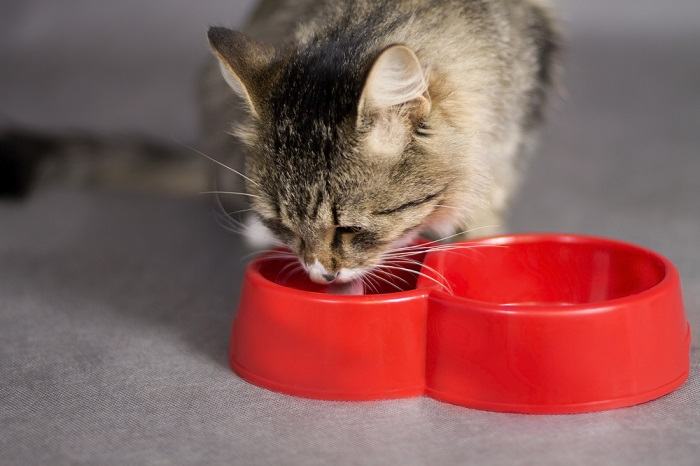
While cats need less water than other animals, they still need access to fresh drinking water at all times.
It goes without saying that cats should always have access to fresh water. But, because of their ability to concentrate their urine, cats are adapted to drinking less water than some other animals. So, if you haven’t seen your cat drink all day, or you forgot to refill the water bowl this morning, the chances are they’ll be OK.
While cats are able to cope better with dehydration than some other animals, water is still vital for their health, and they can’t go long without it. We start to see signs of dehydration in healthy adult cats by around 24 hours without water.
Understandably, there aren’t scientific studies that have shown exactly how long cats can survive without water. But the consensus is that it is unlikely to be more than 3 to 4 days.
In kittens and older cats, or those with other health issues, we will see signs of illness and dehydration much more quickly. In particular, cats experiencing vomiting or diarrhea, or illnesses such as kidney failure or diabetes, can get dehydrated rapidly.
What Are Signs of Dehydration in Cats?
Just like it is for us, water is essential for every part of your cat’s health. It plays a role in pretty much every vital bodily function. If your cat is not drinking enough, they may start to show signs of dehydration, such as:
- Lethargy
- Weakness
- Loss of appetite
- Tacky gums
- Decreased skin elasticity
- Sunken eyes
- Fast heart rate
- Not urinating
You can check your cat for signs of dehydration by feeling their gums (if it is safe for you to do so!), which should be moist. If they are dry or tacky this might be a sign that they are dehydrated. You can also check them for a “skin tent”, which is when their skin does not spring back instantly when you gently lift it up near the shoulder blades.
When Should You Worry That Your Cat Is Not Drinking Enough?
It can be tricky to know exactly how much our cats are drinking. So, if you have not spotted your cat drinking today, but they seem otherwise well, you can probably just monitor them closely. This is particularly true if they are fed wet food and they are eating well.
However, if you have noticed a sudden reduction in how much your cat is drinking or any signs of dehydration or illness, you should take them to see your veterinarian immediately.
But what about cats who are generally healthy, but just don’t seem to drink enough? Are there any long-term consequences of a low water intake?
The truth is, we don’t know for sure. But there appears to be a link between low water intake with a higher chance of problems developing in a cat’s renal system. This includes diseases such as kidney disease and cystitis. Not drinking enough has also been associated with other conditions, such as constipation.
So, it is important to encourage your cat to drink plenty of clean water.
How Can You Encourage Your Cat To Drink More Water?
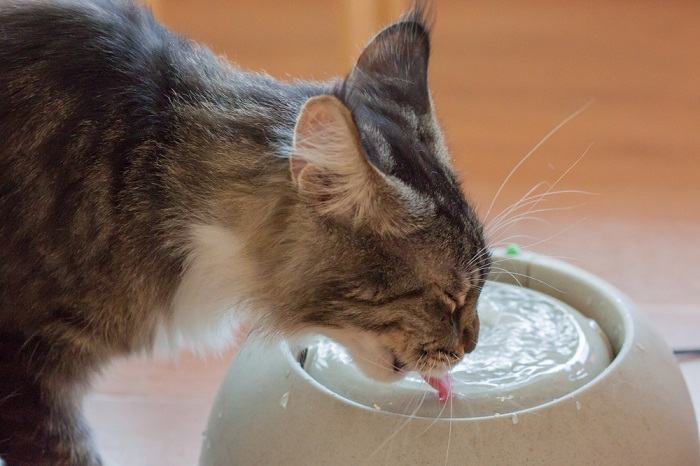
There are several ways to encourage cats to drink more. Having a water fountain bowl for them is a popular choice for many cat owners.
Even though our pet cats have inherited a “low thirst drive” from their desert-dwelling ancestors, there is plenty we can do to encourage them to drink a healthy amount.
1. Have More Than One Water Source
Like litter trays, cats like to have a choice. They also show individual preferences about what type of water source they like best. Having water sources set up in a few different places can help encourage them to drink more.
2. Move the Water Away From the Food Bowl
It is common for pet owners to put food and water bowls together. However, studies have shown that cats prefer food and water sources in different places. This might be a throwback to being wild animals, where it was uncommon for them to find food and water in the same place.
Try putting a water bowl in a different location from their food bowl and see if they prefer it!
3. Try A Water Fountain
Research has shown that some cats prefer to drink from a running water source, such as a cat water fountain. Although it seems to be a matter of personal preference, it is definitely worth a go.
4. Feed Wet Food as Part of Their Diet
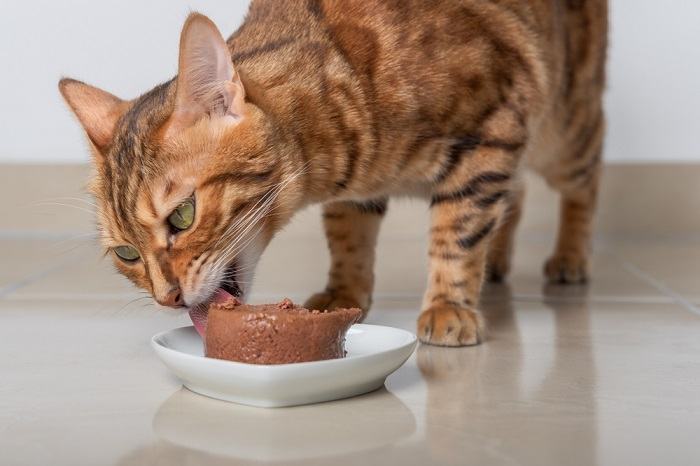
Wet food is made up of up to 80% water and can help cats ingest more water through diet alone.
Although cats that are fed dry food will drink more to compensate for less water in their food, cats that are fed wet food have a higher overall water intake.
So, if you’re worried about your cat’s hydration, it could be worth the swap. Swapping to wet food can be particularly useful for cats suffering from kidney disease or recurrent cystitis.
Cats Drinking Water: Final Thoughts
Cat’s bodies are adapted to drink less than some other animals. So it is normal not to see your cat drinking water that frequently, particularly if they eat wet food. But cats start to suffer signs of dehydration after 24 hours without water.
Like us, it is important for cats to drink fresh water regularly. Tips like having several water bowls (particularly away from the food bowl) and trying a water fountain can help.
If you’re worried your cat has suddenly stopped drinking water- or is drinking a lot more than usual – take them to see your veterinarian for a check-up.
Also Read: Why Is My Cat Drinking A Lot Of Water?
-
Adolph EF. Tolerance to heat and dehydration in several species of mammals. Am J Physiol. 1947 Dec 1;151(2):564-75
-
Grant DC. Effect of water source on intake and urine concentration in healthy cats. J Feline Med Surg 2010;12:431-434. https://journals.sagepub.com/doi/10.1016/j.jfms.2009.10.008
-
Handl S. The Water Requirements and Drinking Habits of Cats. 2018 Veterinary Focus Vol.28 No.3 pp.32-40 ref.24 https://vetfocus.royalcanin.com/en/scientific/the-water-requirements-and-drinking-habits-of-cats

